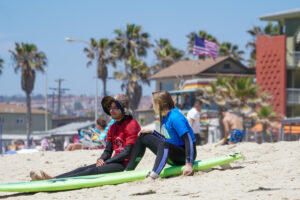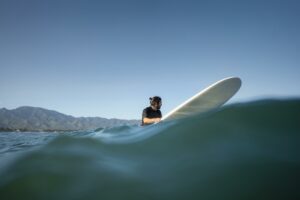If you want to be a surfer, you’re going to have to accept that surfing isn’t always safe. That’s the sacrifice we make for the ultimate adrenaline rush. Accidents do happen, and they can’t always be avoided. That doesn’t mean that we can’t take precautions. If we’re careful, we can avoid most hazards. But we have to be smart, and we have to go prepared. That’s why it’s important to have good safety gear on hand.
Many surfers take unnecessary risks. They’re the clowns that laughed at kids when they were young for wearing bike helmets and kneepads. They’re also the ones that get hurt. They’ll act tough, injure themselves, then shrug it off and laugh some more. Don’t get caught in the trap of peer pressure and hazing. Real professionals know. They don’t skimp. They buy the things they need to stay safe, and they don’t care what anyone says. They just paddle on by.
The truth is that safety is more important than showing off or fitting in, and when you really get down to the nitty-gritty, the clowns are the ones missing out. There are some awesome items available on the market. They function well. They look cool, and they save lives.
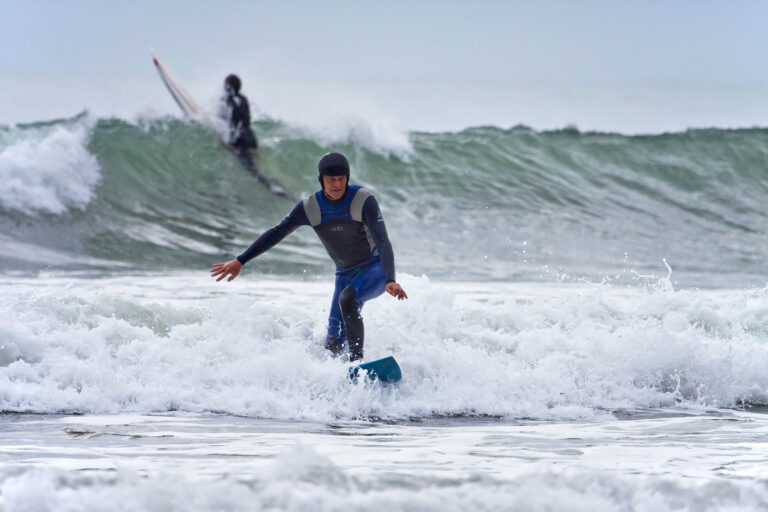
Dave Young / Flickr
Surf Helmets
Protect your noggin. It might seem like common sense. Our brains are the most precious thing we have. But while we might be smart enough to design helmets, we’re not smart enough to wear them. It’s true, you won’t find a lot of head gear out on the water, or even among professionals, but that’s not because helmets aren’t necessary. It’s because science is barely starting to understand just how fragile our minds are, and a lot of people simply do not care.
In recent years, the world of sports has been silently rocked by a revelation: athletes are accumulating bumps to the head, and it is killing them. Many are also experiencing cognitive issues, mental illness, and any number of other symptoms, most of which aren’t well documented. This has always been the case, but we haven’t had the technology to track it until now.
Big wave surfers are especially vulnerable to this condition, known as Chronic Traumatic Encephalopathy (CTE), but common, everyday surfers can still face trauma. We forget that there’s more than sand on the ocean floor. There’s reefs, rocks, and debris. The most popular surfing beaches in San Diego are notorious for their dangerous underwater conditions, and even water itself is known to cause head trauma.
The problem is that the community doesn’t seem to want to address this. Even professional surfers don’t often wear helmets until they end up in hospital beds or wheelchairs.
Again, ignore the peer pressure. Be smart and protect yourself. More than likely the guys laughing at you for wearing a helmet have a few more bumps on their noggin than they’re aware of.
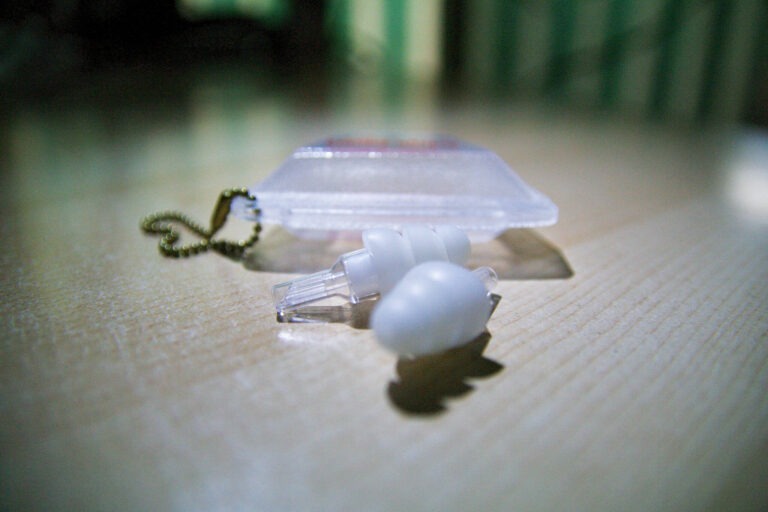
Jaymis Loveday / Flickr
Earplugs
Another commonly overlooked problem in the surfing world is surfer’s ear, also known as exostosis. What happens is over time cold wind and water cause abnormal bone growths, constricting the ear canal. This can lead to hearing loss and ear infections. It can also make it harder for the ear to drain, trapping debris and water inside. Most people notice it when they have trouble with drainage.
Just like with helmets, surfers tend to ignore earplugs, opting instead to shrug it off and keep going. This can be highly dangerous, especially when there’s an infection present, and surfer’s ear is pretty common. A 1999 study showed that out of more than 300 surfers the prevalence of exostosis was well over 75%.
If you want to save yourself the trouble of antibiotics and potential surgery, all you have to do is wear earplugs. There are plenty of designs available, and some of them come custom-made, fitted specifically to your ear shape. They’re pretty awesome.
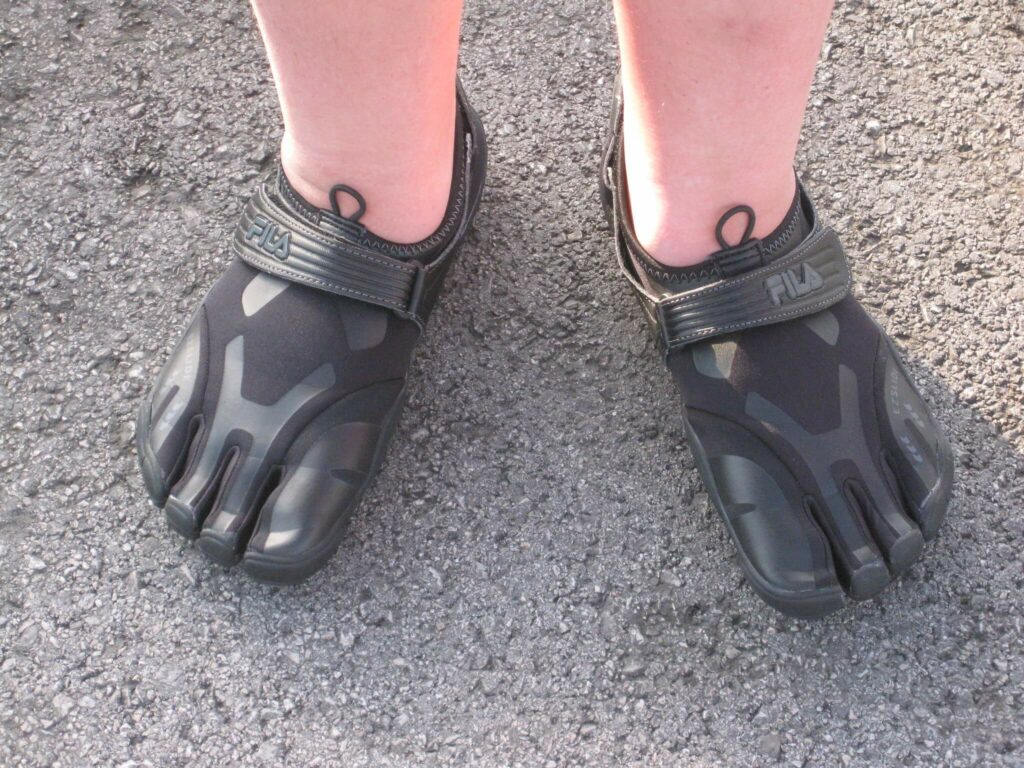
Richard Elzey / Flickr
Reef Boots
Reef boots are one of the less controversial forms of safety gear. Everyone loves the way they conform to their toes, providing the necessary protection from rocks and coral. They’re actually quite popular, though that wasn’t always the case. Before these new-fangled shoes came out, surfing was a barefoot sport, dominated by free spirits who rarely covered their feet. It was easier than wearing a regular pair of sneakers, which could cause foot odor and stifle your pop-up. But reef boots are quite convenient, and they make it easier to stand up on the board because of the traction they provide.
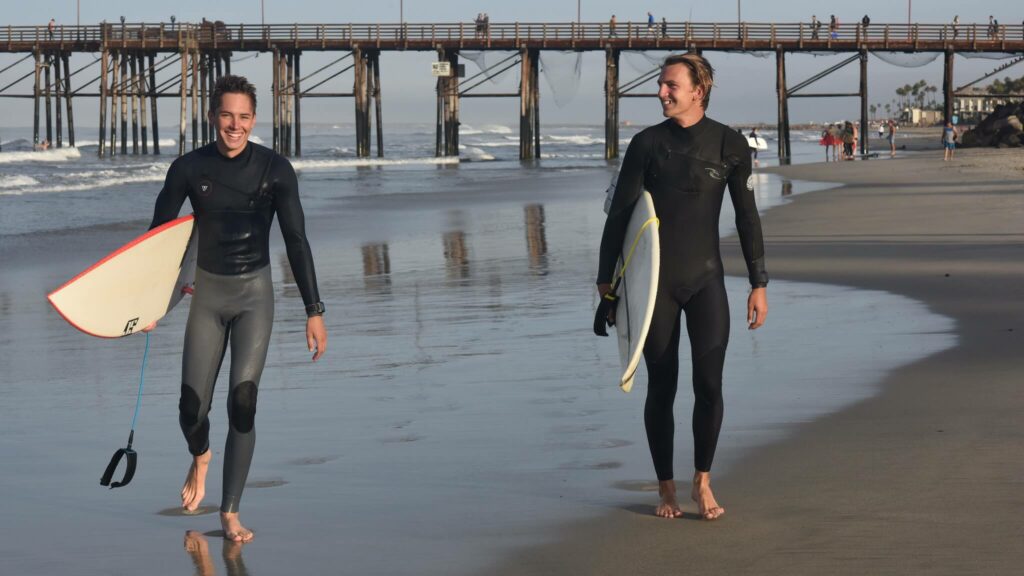
Chris Hunkeler / Flickr
Wetsuits
Sometimes the water is just too cold for a simple pair of swimming trunks. In fact, if you’re surfing in chilly weather, you could be facing hypothermia unless you find a way to cover up. Wetsuits are built to shield the body from the cold, making it possible for surfers to immerse themselves in otherwise deadly temperatures.
Surfboard Leash
For a long time, surfboard leashes were taboo. Nobody would wear one. They’re basically a line that wraps around your ankle and attaches to your board, allowing you to stay connected, even during a wipeout. The problem was that they could get snagged, making it impossible to surface when you’re underwater. Plenty of surfers have drowned that way. But board leashes also keep your board from drifting off, bashing you in the head, or crashing into someone else—one of the most common causes of injury. Modern board leashes avoid snags by using a mechanism that releases easily with resistance. If you get caught up, you can jerk your foot and it’ll come off, allowing you to get your head above water. Since this new development hit the market, leashes have become almost universal.
Safety is About More Than Just Gear
You could have the best equipment in the world, and it wouldn’t mean anything without the experience and training necessary to read the waves. Surfers spend years developing their intuition, honing their instincts, and learning how to keep themselves safe out on the water. That’s not something that you can learn on your own. If you want to know how to protect yourself while surfing, it’s important to find a good instructor who can show you the ropes.


